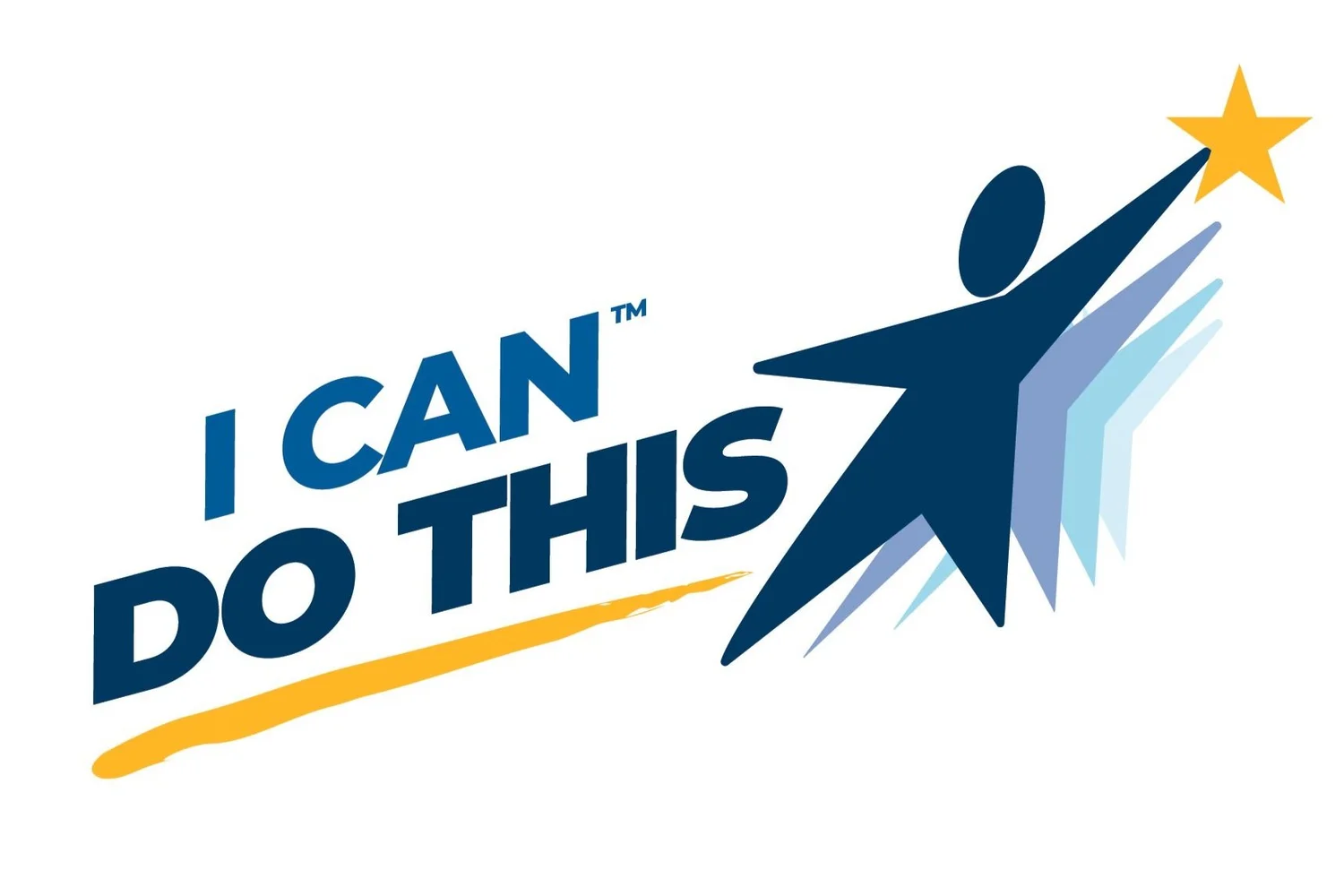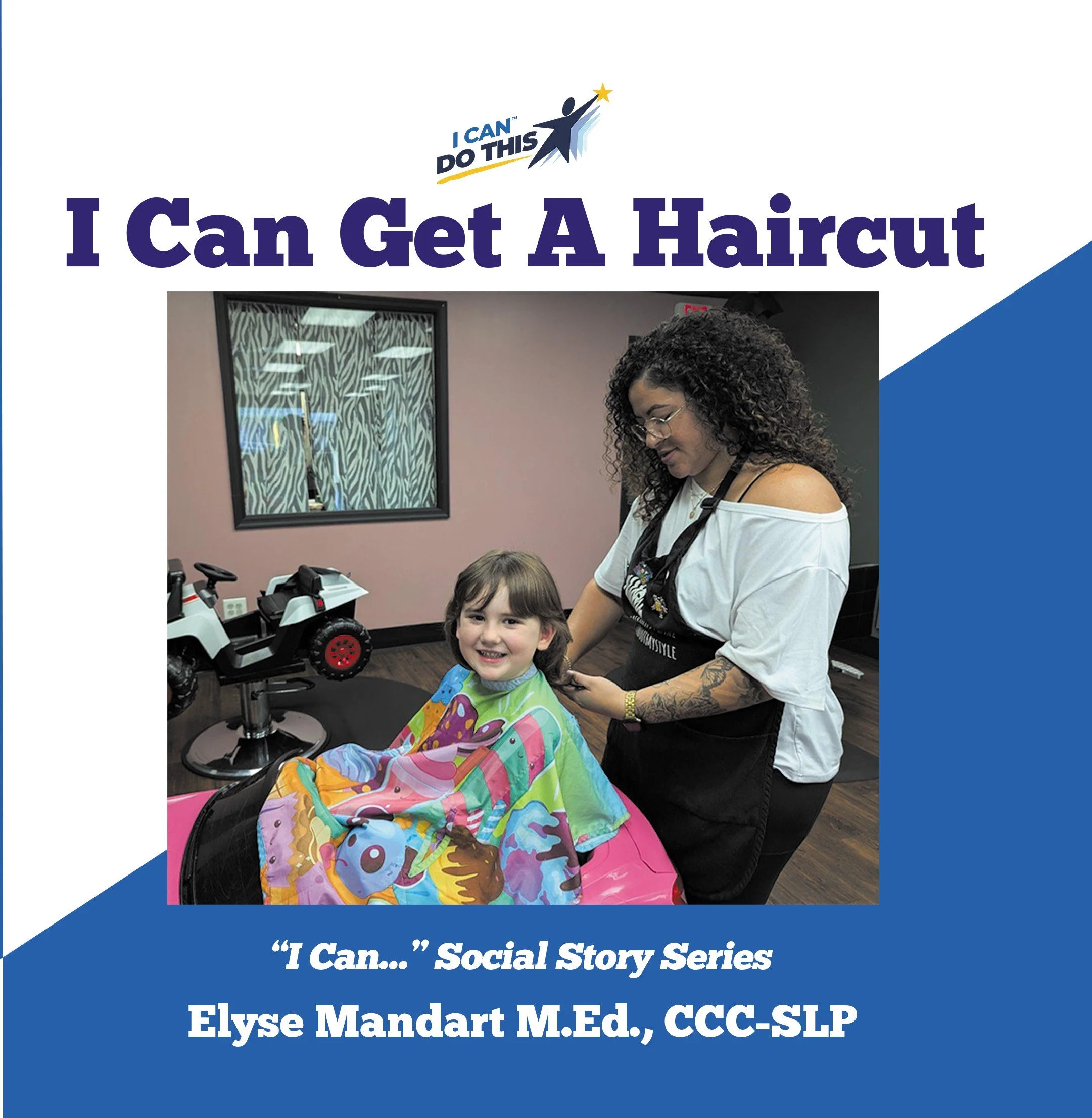
Get a Haircut
“Play is not only our creative drive; it's a fundamental mode of learning.”
— David Elkind
I Can Get a Haircut!
While some children love going to the hair dresser just like Mommy and Daddy, other children have a lot of anxiety about getting their hair cut. Think about getting a first haircut from a child’s perspective - a hair salon or barbershop is a new place with new people, smells and sounds. And, a stranger is going to touch them, and bring tools that buzz, snip, and spray water near their head. No wonder they might be frightened!
We can support children before they even step foot in a salon/barbershop to understand the process of getting their haircut, and to get them familiar with the tools that will be used.
Here are some strategies to help your child get ready for a haircut, and
suggestions for ways to reduce stress and meltdowns while at the salon.
Preparation Before the Haircut:
Read books and watch videos about getting a haircut-
Normalize what a haircut looks like and show your child that other kids, adults, and even pets get a haircut.
Engage in imaginative play about getting a haircut-
Play “hair salon” or “barbershop” to help your child understand what to expect at their haircut. Make it silly and fun! For example, “Hello! I am here for my haircut, can you cut my hair and then give me a hairstyle with ponytails coming out all over my head?!” You can also use dolls and stuffed animals as clients at your salon.
You can even act out being scared, and ask your child “will it hurt?” and “do I get a prize at the end?” so that they can comfort to you and affirm to themselves that it will be OK.
Find the right salon/stylist-
Search online and ask other families to find a hair salon that might be a good fit for your child. Some salons specifically have special haircut packages for children with anxiety, or special needs.
Call the hair salon ahead of time to talk to the stylist you will be working with. Consider requesting a time slot when the salon is not very busy so that it will be quiet/calm and your child will not have to wait very long for their turn.
Talk to your child about what will be happening and when-
Tell your child that they will be getting a haircut and tell them what will happen at the haircut. Just trimming their bangs? Cutting just the ends? Cutting all over?
Tell your child where the haircut will be. At your house? At a salon? Does the salon have pictures on their website of their salon and the particular stylist your child will have that you can show your child beforehand?
Tell your child when the haircut will be. Depending on your child’s understanding, you can put it on the calendar and remind them during the week. Or, create a post-it countdown to the day so that they can visually see how close they are to haircut day.
Give your child some control-
When trying something new, giving your child control over some part of the event can help them feel more willing to try it. Let them pick what they want to play with or snack on while getting their haircut- tablet? books? a special treat?
Does your child want to pick a special headband/bow or hat that they will get to wear after their haircut?
Prepare your haircut supply kit-
Bring rewards (lollipops, stickers, tablets), snacks, drinks, and whatever else your child selected as their special things to give them control.
At the Haircut:
Make modifications as needed-
Some children do not like the feeling of the fabric of a cape. It can feel slippery and slimy to them. Try using a bath towel wrapped around instead, or an oversized t-shirt wrapped around to keep the little hairs from irritating them.
Some children find the clippers frightening because they are loud and vibrate next to their head. Maybe try getting a first haircut with just scissors, and then try clippers once they feel comfortable.
Some children dislike the spray bottle. The water can be alarming and cold. Try giving the child their own spray bottle to hold and let them spray it during the haircut, and let them know when the hairdresser is going to spray it. You could also try going to a haircut with wet hair already (have them take a bath/shower right before you leave the house), so that the hairdresser won’t need to spray their hair.
End with SUCCESS- don’t wait until meltdown-
Once the hairdresser has started, it can be tempting to try and force your child to make it through to the end. However, this can backfire as your child then has the memory of a negative experience at the hairdresser. Even young children can make associations with places and people that were scary or unpleasant.
Try to end with success- even if that means that the haircut is uneven. Kids are adorable regardless- their hair doesn’t have to be perfect! If your child had a positive experience, it will be easier to come back in the future, and hopefully they will sit for longer the next time.
Depending on the ability level of your child, a “success” might look like walking in the door and watching you get your haircut. It could be sitting in the chair for 1 minute and not getting their haircut yet. Trust your instincts for how much your child will be able to handle before getting upset. Talk to your stylist ahead of time so that you won’t have to pay for an appointment if they are just going to come in and watch, or explore the space.
Reward for trying-
Regardless of how complete the haircut was, reward your child for trying something new. This can be verbal praise (“Wow! I am proud that you went in and sat in the chair! That is so exciting!”), a tangible item (“Let’s get ice cream for being brave!”), or both.
Try to create a positive association for trying something new, and in particular going into the new hair salon.
Take pictures for next time-
Children benefit from seeing themselves doing something so that they can visualize doing it again. Try to snap some pictures of your child going into the salon, sitting in the chair, getting their haircut, etc. The next time that you go for a haircut you can review the pictures with your child and talk them through what to expect. And, make sure to include the picture of them smiling with their reward after the haircut too! “Remember when we went to the hair salon last time? You sat in a racecar, and you watched your tablet while the hairdresser cut your hair. You were so brave, and we went out for ice cream afterwards!”
Please refer to the BEHAVIOR DECODER section below if you have already had a negative experience at the hair salon and are looking for even more strategies, and the recommended BOOKS, TOYS and SUPPORTS, and VIDEOS sections below for vetted products and videos. Additionally, please use the RESOURCES section for further information and strategies about helping your child get a haircut.
Recommended Books
As an Amazon Associate I earn a small percentage from qualifying purchases.
Books for Toddlers (Ages 1-3) and Young Children (Ages 3-5)
Recommended Toys and Supports
As an Amazon Associate I earn a small percentage from qualifying purchases.
Watch & Be Empowered!
For Kids: Sesame Street muppets and cast show children what to expect at a barbershop.
For Kids: My own custom “Social story” for a step-by-step walkthrough for what to expect when getting a haircut.
For Kids: Sesame Street muppets and cast show children what to expect when getting a haircut, and discuss everything hair! There are two full episodes in this link. Feel free to skip around to find the sections that your child enjoys and can benefit from.
For Kids: Daniel Tiger shows children what to expect at a haircut.
Behavior Decoder:
OK, so you tried to prepare your child for the haircut using all of the above strategies and there are still some issues. Below I will break down the process for trying to decipher what your child’s “behavior” is trying to tell you. It can be challenging, but don’t give up! You may have to modify a few things, and there may be some trial and error, but stick with it!:
Write down the behaviors you are seeing, and try to look for patterns.
Is your child struggling with all personal hygiene tasks (washing/rinsing their hair, brushing teeth, cutting nails, toileting, etc.)? They might have an overactive sensory system that is making these activities either feel painful, uncomfortable or alarming. An Occupational Therapist who specializes in Sensory Processing would be a great resource to help your child learn how to better process these types of sensations.
Does your child always seem to struggle to sit still for long periods? Try having your child run around, and do “heavy work” before the haircut so that their body is calm and better able to sit for longer periods. You could also consider adding breaks into the haircut so that they only have to hold still for short periods and then they can take a lap around the salon. You could use a timer, or a number of activities before they have to come back (“You can jump 10 times and then we will come back and sit down.”)
Create a visual schedule for getting a haircut to create order and predictability.
Does your child pace in new spaces, and doesn’t seem to know where they need to go, or where they should be? Many children benefit from having visual supports to show them what the steps will be so that they will know what to expect. You can draw pictures with check boxes as you go along, or bring a book that you read about getting a haircut and show step by step what is happening.
Look at the activity of getting a haircut, and figure out where the stressors could be. Then, try to eliminate them by either modifying the activity, or preparing for the possible stressor.
Does it take a half an hour to get to the salon by car? Maybe your child needs to run around on the playground first to get their energy out before sitting in the salon chair, or needs to have a snack in the car beforehand.
Have you been to this salon before and maybe your child has a negative association with it? Try going to a different salon so that you can have a fresh start.
What sounds and smells are at the salon that might be different/overwhelming to your child? Salons often have the smells of shampoos, hair spray, and styling creams that are intense and unfamiliar. The sounds of the hair dryers and clippers can be loud and unpleasant. For children with overactive sensory systems, this can be too much to handle. Consider going to the salon when there are no other people there to make noise, and check out the salon first to make sure that it doesn’t have a strong smell. An Occupational Therapist who specializes in Sensory Processing would be a great resource to help your child learn how to better process these types of senses.
Does your child refuse to even walk in the salon door? Build up to getting a haircut in stages. Reward for just walking to the door and touching it. Then reward for walking in the door, staying for 5 seconds and then leaving. And so on. It can be a long process, but so worth it if you are able to have your child get their haircut at the end of it.










